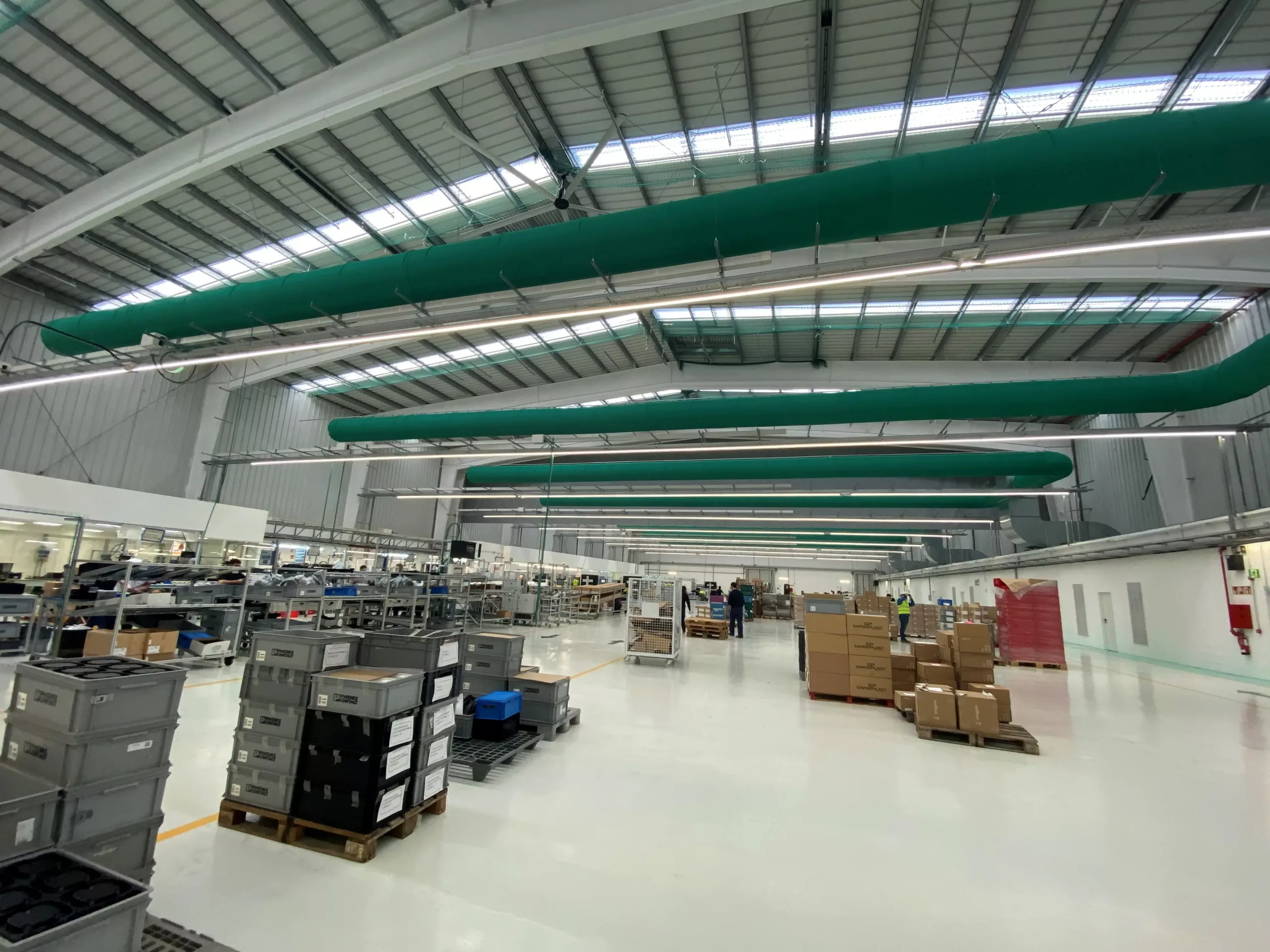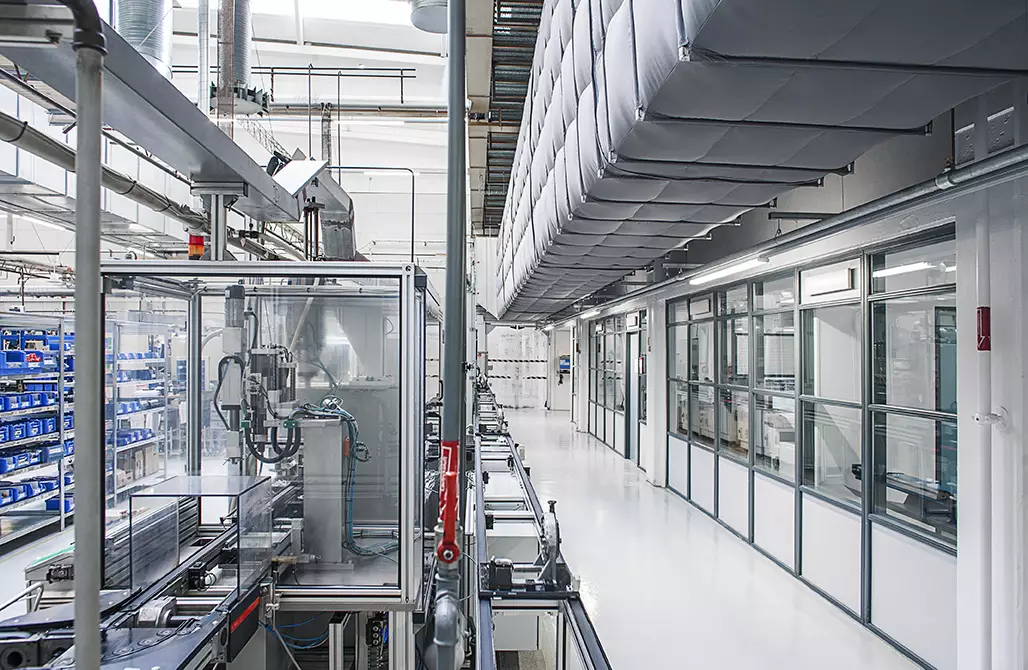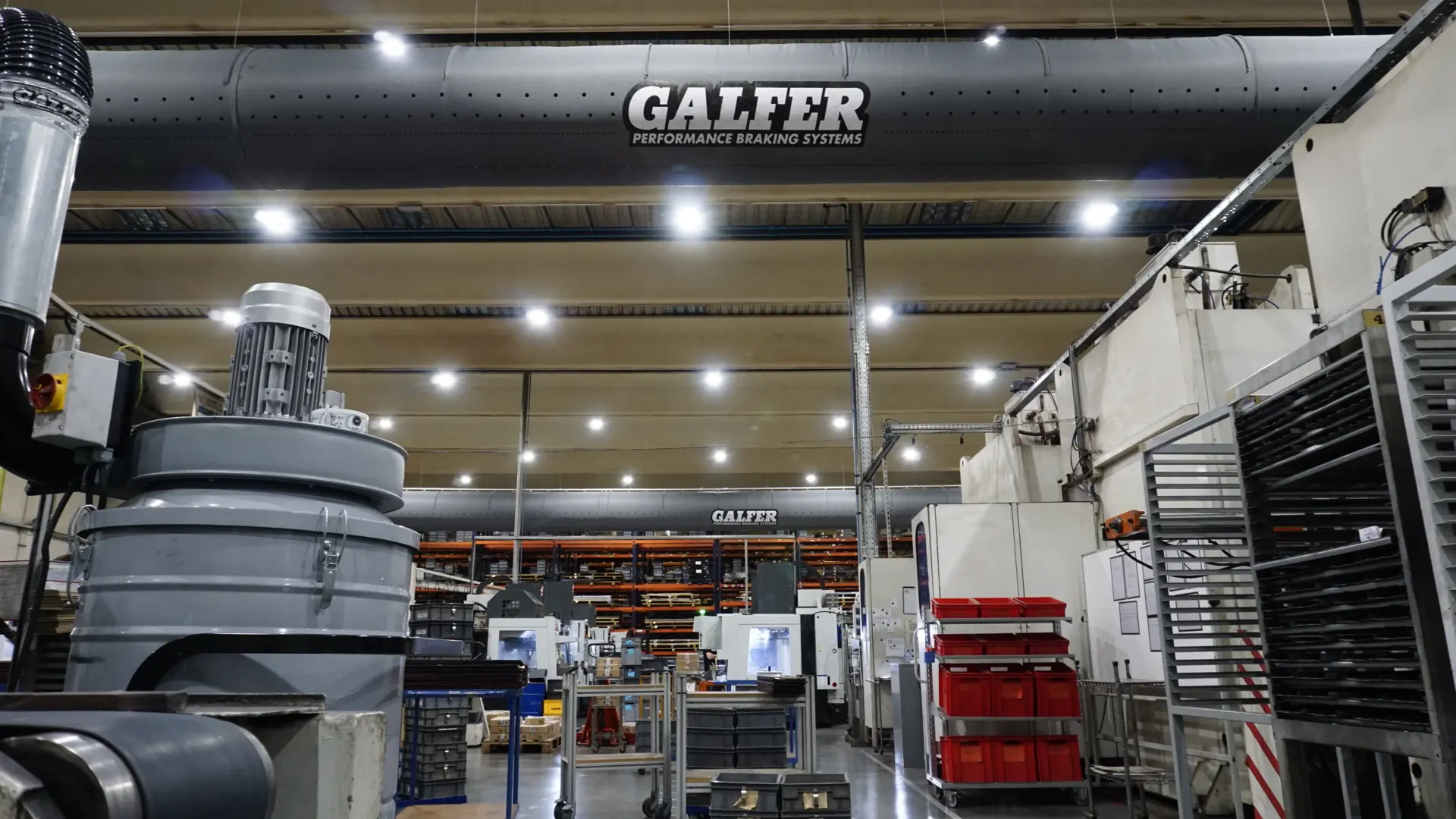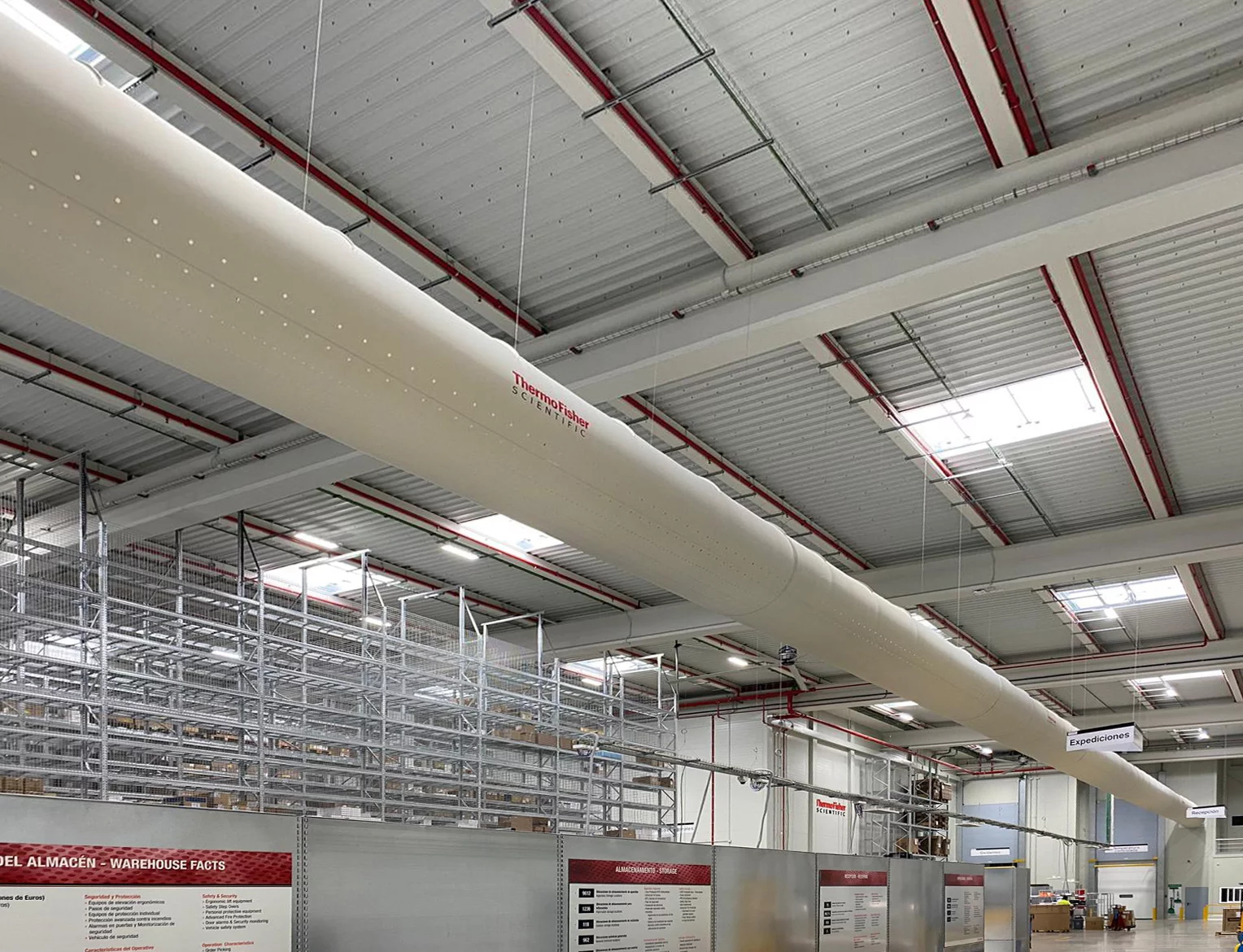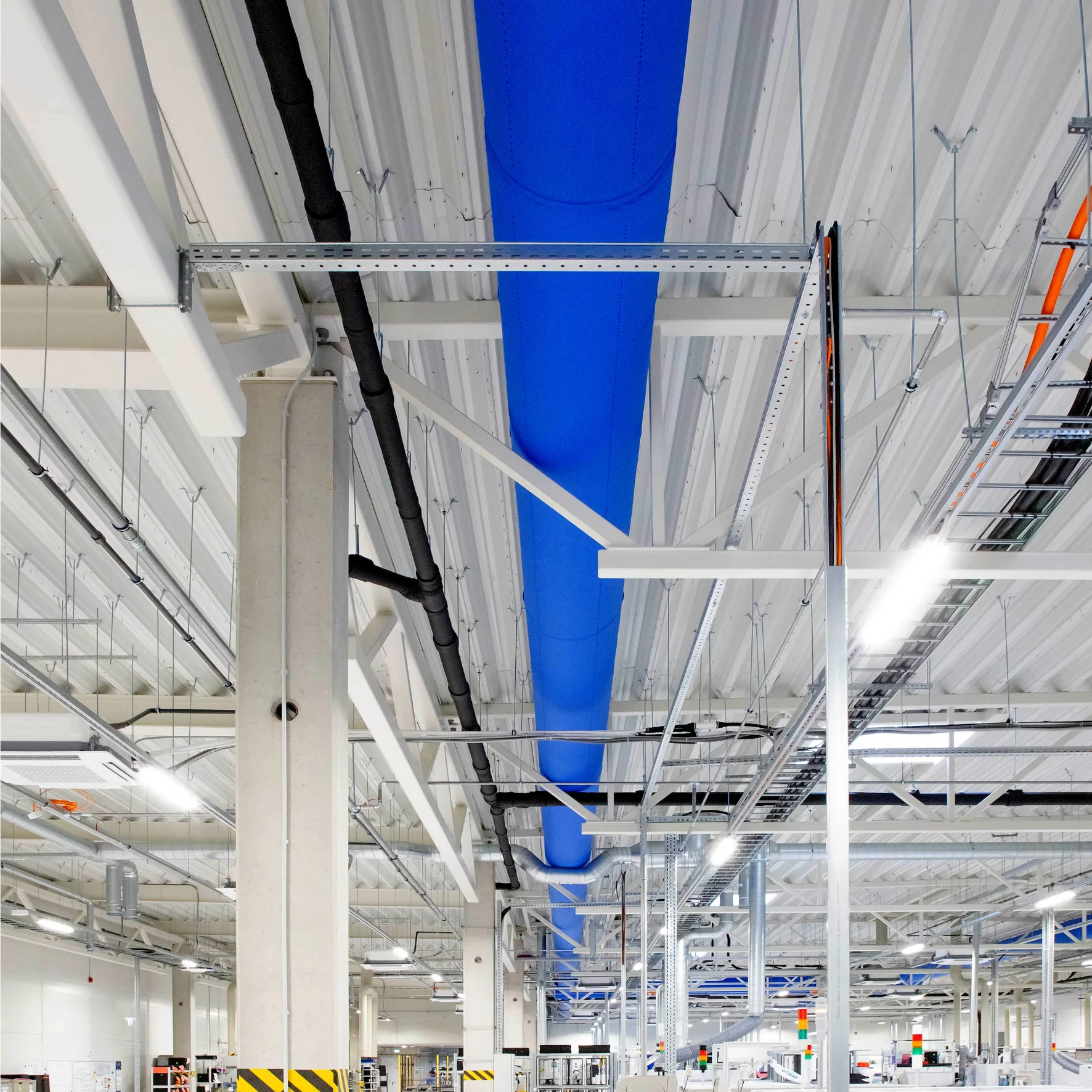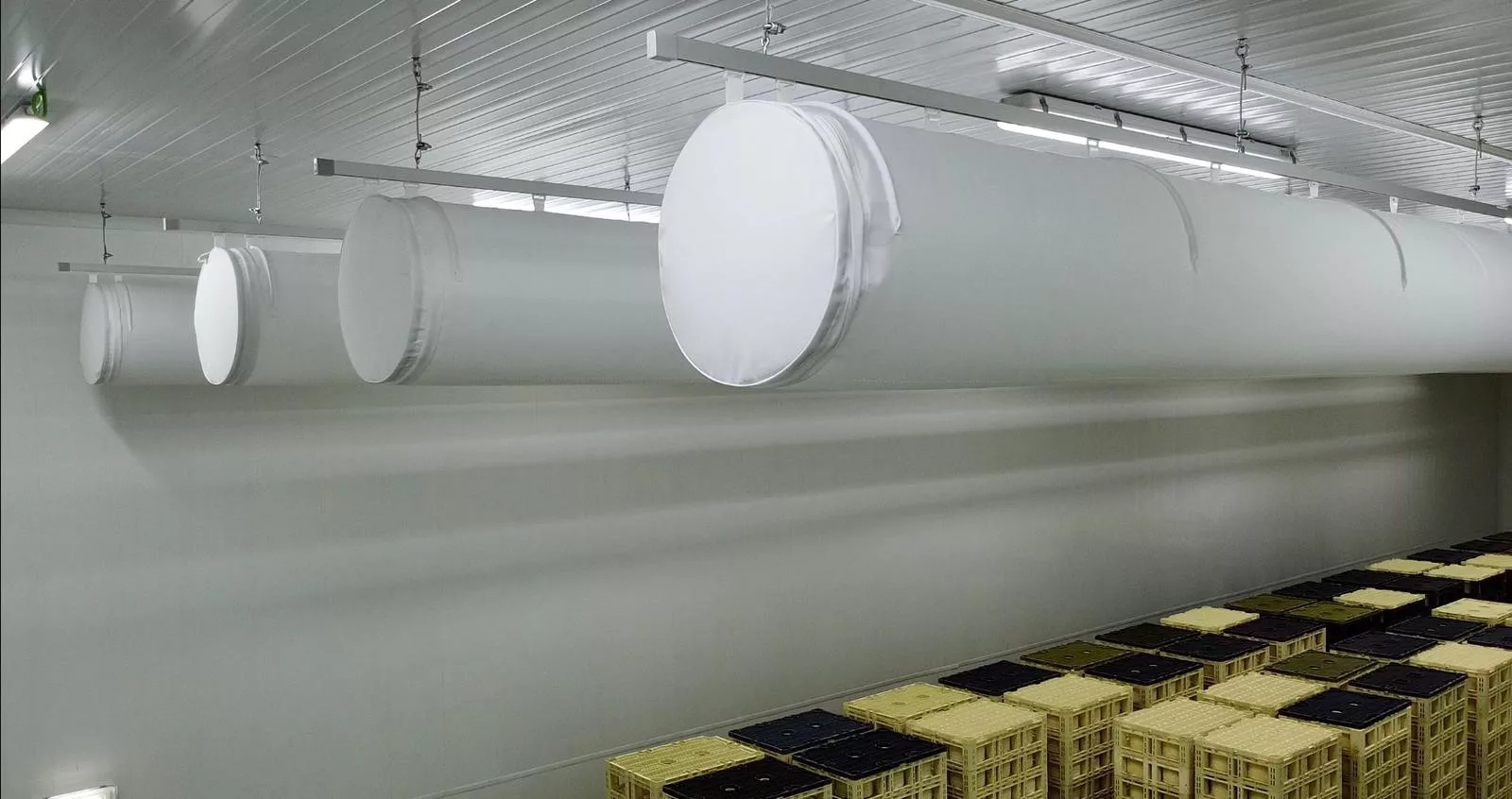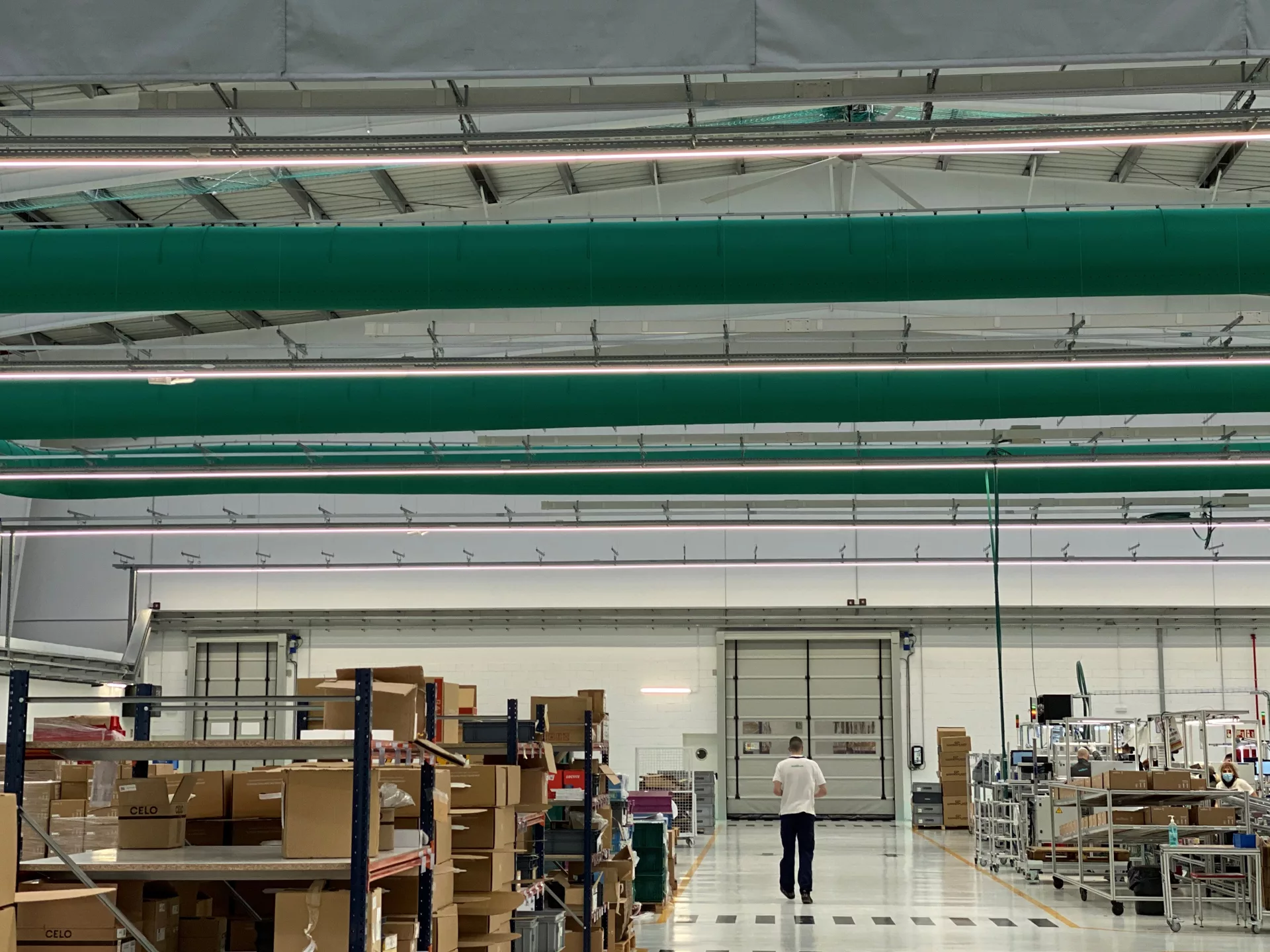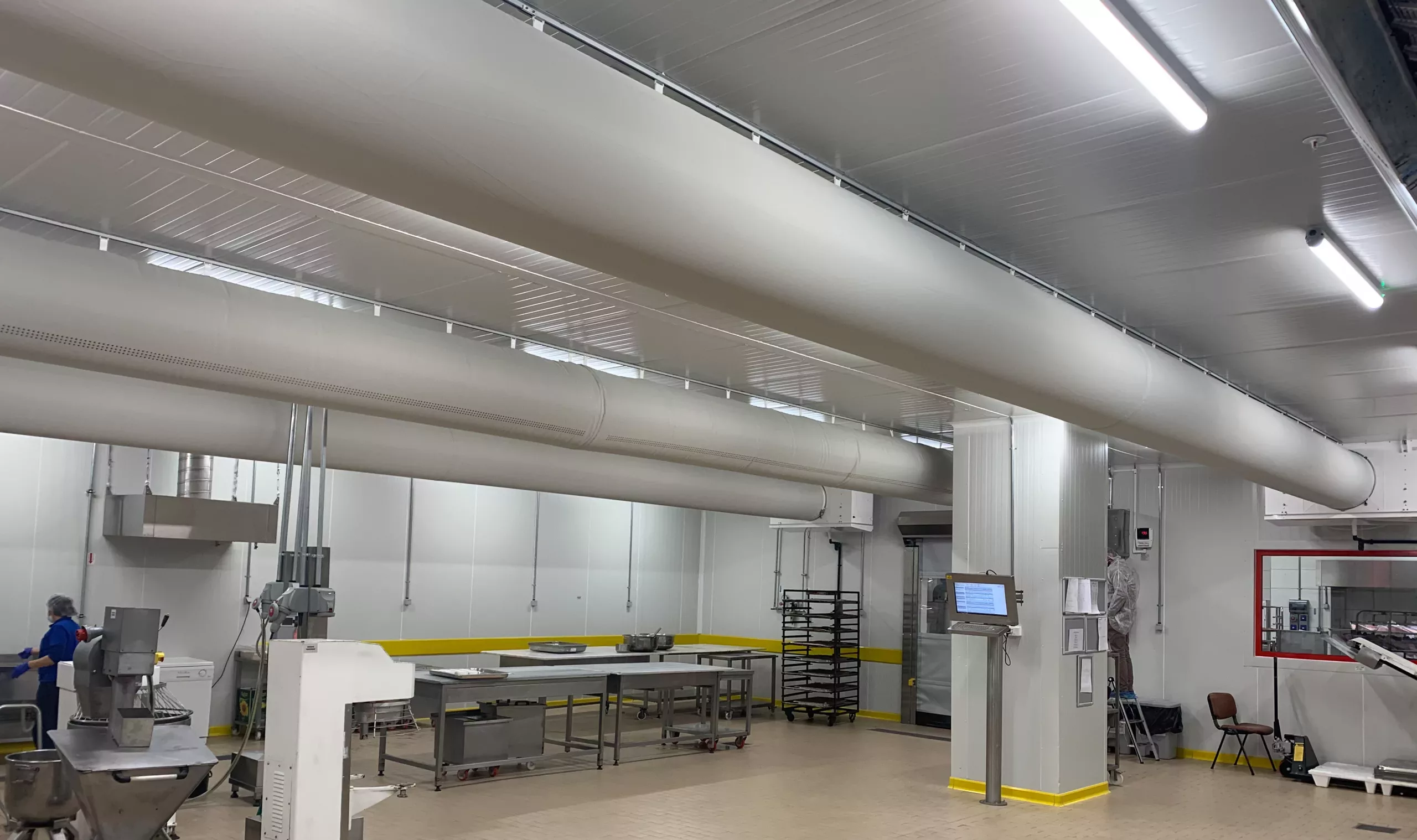
Industrial Facilities
What Is Industrial Air Duct?
Industrial air duct refers to HVAC air distribution systems designed for large-scale facilities such as factories, warehouses, and production plants. These systems are engineered to move air efficiently over long distances and through wide, open spaces—often under tough conditions including dust, moisture, and extreme temperatures. Fabric duct systems, also known as textile air dispersion systems, offer a lightweight, flexible and customizable alternative to traditional sheet metal ducts, delivering even airflow while reducing strain on mechanical equipment. Lightweight, corrosion-resistant, and easy to install, they provide precise airflow tailored to your application. Whether you are conditioning air for a warehouse, pharmacy plant, or maintaining cleanliness in a cleanroom facility, industrial air ducts offer superior performance and flexibility.
Ideal HVAC Solution for Industrial facilities
Washable, corrosion-resistant materials require minimal upkeep
Lightweight components simplify transport and assembly
Permeable fabrics prevent moisture buildup
Designed to match ceiling heights, machinery layout, and occupancy needs
FAQ
Fabric-based air distribution solutions have a lot of upsides if compared to conventional metal ducts. For example, condensation is a typical concern in HVAC ducting. However, fabric ducts do not have the same natural tendency to condensate as other HVAC ducts do. Permeable textiles prevent the formation of condensation on the ductwork, which is why fabric ducts do not require insulation.
Eliminating the need for insulation provides significant time savings on a project, which naturally also affects the price. The savings potential also includes materials and the transportation and storage of these during the building project. The efficient use of light-weight materials also means lower shipping costs. A textile-based ventilation solution fits into just a few boxes, rather than the truck loads of materials required to create a metal duct solution.
The hygienic nature of fabric ducts stems from the elimination of condensation, which in turn prevents bacteria, microbial growth and mold. Fabric ducts can be machine washed; some textile ducts can even be autoclaved. That cannot be done with conventional ventilation ducting.
Finally, fabric ductwork offers unique sound-technical properties, which means they are the better alternative in noise sensitive applications. FabricAir offers solutions ideal in libraries, auditoriums, and the like.
Fabric duct systems are custom engineered to perform reliably in challenging industrial conditions. Specific fabric types, such as Zip-a-Duct 60, Zip-a-Duct 70 or Zip-a-Duct 80, are ideal for environments with high levels of dust, humidity, or corrosive materials. Our fabrics are durable, flame-retardant, and resistant to mold and mildew. In dusty or particulate-heavy settings, fabric ducts provide clean air distribution because dust does not settle on the exterior (of permeable fabrics) or accumulate inside like it can in metal ducts. Additionally, their light weight is resistant to issues related to vibration and impact, making them well suited for dynamic industrial environments.
Yes. FabricAir provides solutions that are flame-retardant and antistatic, important features for industrial facilities with stringent safety requirements. Fabrics are available in flame-retardant and are certified to relevant international standards, including EN 13501-1 and UL 723. For environments where electrostatic discharge (ESD) could pose a hazard—such as battery plants, electronics production, or explosive environments—antistatic fabrics with conductive yarns help dissipate static charges and support compliance with safety protocols.
Fabric ducts are custom engineered to distribute air evenly across their entire surface using flow models tailored to the application. This eliminates hotspots, drafts, and dead zones that can occur with traditional metal duct systems which only disperse air through grilles or diffusers. In large-scale industrial spaces, directional airflow models like OriFlow or SonicFlow provide long-throw coverage for open workspaces or equipment zones, while models like MicroFlow ensure low-velocity mixing in sensitive areas. These customized patterns improve comfort, air quality, and process stability.
Maintaining fabric duct systems is simple and efficient. Unlike metal ducts that require specialized cleaning tools and may harbor dust or debris inside, fabric ducts can be unzipped, removed, and machine-washed at regular intervals to maintain cleanliness and hygiene. This is especially important in environments with heavy particulate matter, where buildup can affect air quality and system performance. Some industrial facilities keep spare duct sections on hand to rotate during wash cycles, reducing downtime.
Fabric ducts support energy efficiency in multiple ways. Their lightweight construction reduces material and installation costs, and their smooth internal surfaces reduce static pressure, helping fans run more efficiently. Because airflow is distributed precisely where needed, HVAC systems can avoid over-conditioning unused space, leading to lower energy consumption. Additionally, even air distribution can minimize the need for additional heating or cooling equipment. These savings are especially impactful in large facilities with 24/7 operations.

